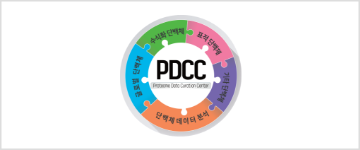2025 Fall
International Convention of PSK
2025 CONVENTION
Abstracts
Anticoagulant sulfated polysaccharides from Stichopus japonicus: Extraction and purification
- Eunbeen Shin1,2, Sangmin Lee1,2, Yerim Joo1,2, Daeun Kim1,2, Seon Beom Kim*1,2,3
- 1Department of Food Science and Technology, College of Natural Resources and Life Science, Pusan National University, South Korea
- 2Institute for Future Earth, Pusan National University, South Korea
- 3Food Tech Innovation Center, Life and Industry Convergence Research Institute, Pusan National University, South Korea
Natural products have attracted increasing attention as promising sources for pharmaceuticals and functional foods due to their low toxicity and reduced risk of including resistance. Sulfated polysaccharides show diverse biological activities, including antioxidant, anticoagulant, immunomodulatory, and antimicrobial effects. Heparin is a widely used as an antithrombotic drug, but long-term use can cause serious side effects, highlighting the need for safer alternatives. However, limitiations in extraction and purification methods have confined most studies on sulfated polysaccharides to crude extracts. In this study, sulfated polysaccharides were extracted from Stichopus japonicus, a sea cucumber native to Korean coastal waters. A multi-step procedure, which included enzymatic protein removal, selective polysaccharide isolation with cetylpyridinium chloride, and ethanol precipitation, improved polysaccharides with over 95% purity. Sulfated polysaccharides were selectively isolated from the extracted polysaccharides by ion-exchange chromatography using a salt gradient. Two fractions of sulfated polysaccharides, designated as A and B, were obtained and confirmed by the DMMB assay. After desalting, fractions were analyzed by NMR. The optimized extraction and purification methods provide a basis for future studies on polysaccharides. Further studies using NMR, GC-MS, and LC-MS will clarify the monosaccharide composition, linkages, and sulfation patterns of these polysaccharides.
Q&A
- There are no registered questions









































